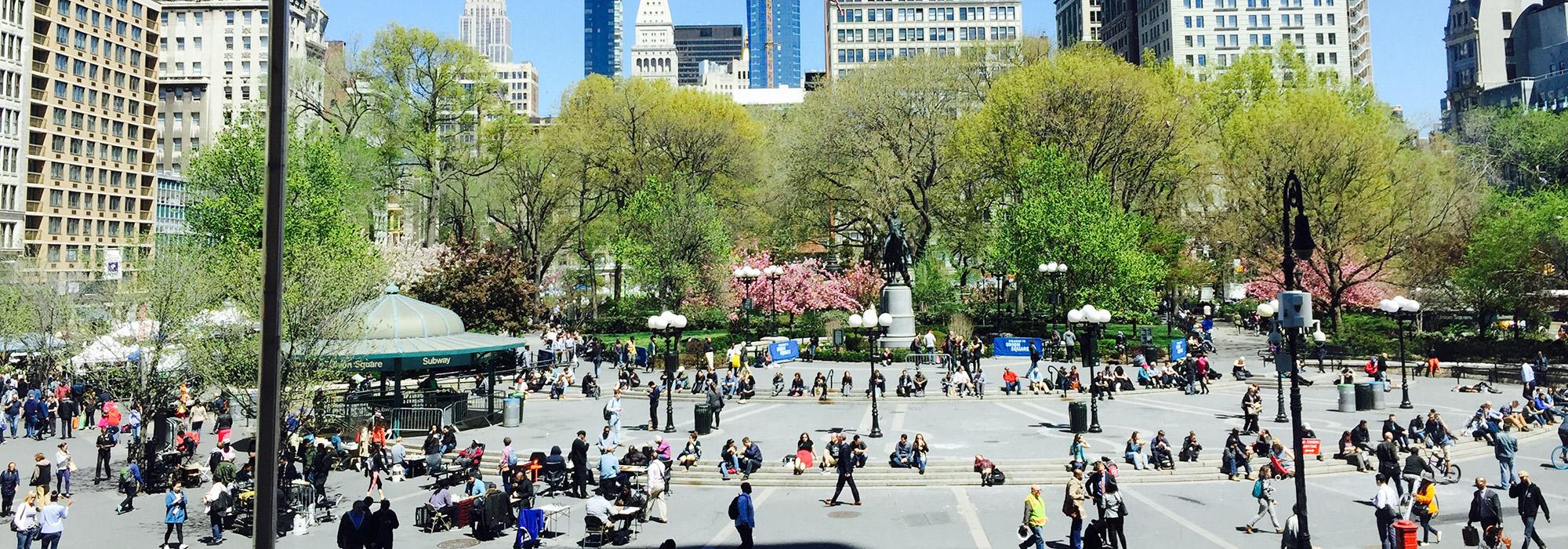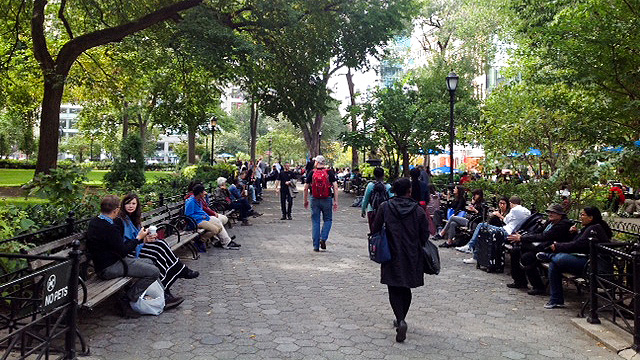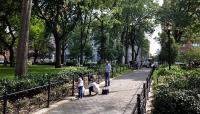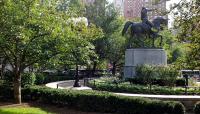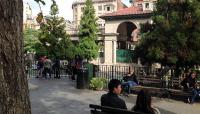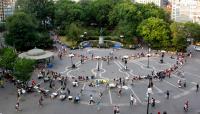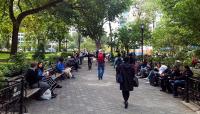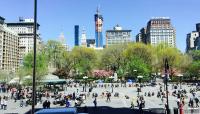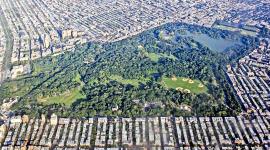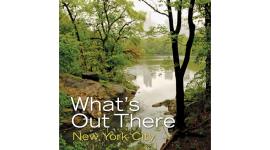Landscape Information
Situated between East 14th and East 17th Streets, this 6.51-acre park has long been the site of political protests and public gatherings. Formerly a burial ground, it was laid out in 1815 as Union Place and opened as a park in 1839. Although Parks Engineer-in-Chief M.A. Kellogg and Acting Landscape Gardener E.A. Pollard created a new plan for the park in 1871, it was redesigned the following year by Frederick Law Olmsted, Sr. and Calvert Vaux. The elliptical park had featured an iron picket fence, a large central fountain, and paths in a cross pattern lined by allées of trees. To accommodate public gatherings, Olmsted and Vaux removed the fence and hedges, squared off the park’s northern end, added the Women and Children’s Pavilion, and widened the sidewalks. The park was demolished in the late 1920s to accommodate the 14th Street subway station, and the pavilion was reconstructed, the Independence Flagstaff by Anthony de Francisci (1930) dedicated at the park’s center, and park paths straightened. In 1985 the Department of Parks created a new plaza at the park’s southern end and planted a central lawn.
The southern section of the park features a central lawn and a curving plaza. At the northern end, redesigned by Michael Van Valkenburgh Associates from 2003 to 2009, is a colonnaded pavilion opposite a statue of Abraham Lincoln (1870) by Henry Kirke Brown. At the park’s other three axis points are a statue of George Washington (1856) also by Brown, a statue of Marquis de Lafayette (1876) by Frederic Auguste Bartholdi, and the James Fountain (1881) by Karl Adolph Dondorff. Union Square was added to the National Register of Historic Places and designated a National Historic Landmark in 1997.



